Qtum
$1.93
1.93400000
$203,993,581
Total Market Cap
107,822,406 QTUM
Circulating Supply
$16,610,135
24h Volume
$203,993,581
Total Market Cap
107,822,406 QTUM
Circulating Supply
$16,610,135
24h Volume
$203,993,581
Total Market Cap
107,822,406 QTUM
Circulating Supply
$16,610,135
24h Volume
$203,993,581
Total Market Cap
107,822,406 QTUM
Circulating Supply
$16,610,135
24h Volume
| # | Signal | Exchange | Type | Age |
|---|


| Logo | Exchange | Price | Pair | Spread | 24h Volume |
|---|---|---|---|---|---|
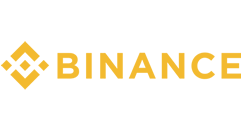 |
Binance | $1.934 | QTUMUSDT | $0.00 | $1,028,189 |
 |
Binance.us | $2.019 | QTUMUSDT | $0.11 | $19 |
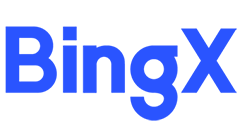 |
BingX | $1.935 | QTUM/USDT | $0.00 | $36,599 |
 |
BitMart | $1.934 | QTUM/USDT | $0.00 | $68,335 |
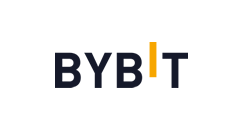 |
Bybit | $1.9325 | QTUM/USDT | $0.00 | $48,915 |
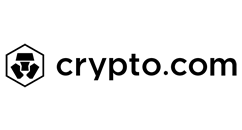 |
Crypto.com | $1.9369 | QTUM/USD | $0.01 | $657 |
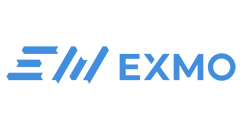 |
EXMO | $1.983249 | QTUM/USD | $0.04 | $443,788 |
 |
HitBTC | $2.2973 | QTUM/USDC | $0.03 | $0 |
 |
HTX | $1.9343 | QTUM/USDT | $0.00 | $7,347,647 |
 |
Kraken | $1.91103 | QTUM/USD | $0.00 | $6,156 |
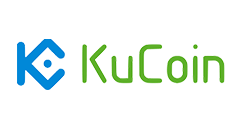 |
KuCoin | $1.924 | QTUM/USDT | $0.00 | $576 |
 |
OKX | $1.939 | QTUM/USD | $0.01 | $3,856 |
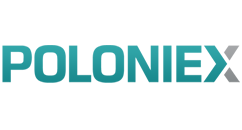 |
Poloniex | $1.914 | USDT_QTUM | $0.09 | $0 |
 |
ProBit Global | $1.924 | QTUM/USDT | $0.18 | $8,925 |
Qtum (QTUM) is an open-source blockchain platform that combines Bitcoin's UTXO transaction model with Ethereum's smart contract capabilities. Launched in 2017, Qtum was designed to bridge the gap between these two major blockchain ecosystems, offering a business-friendly platform for decentralized application (dApp) development while maintaining security and stability.
At its core, Qtum (QTUM) implements a proof-of-stake (PoS) consensus mechanism and utilizes an Account Abstraction Layer (AAL) that allows the execution of smart contracts on top of the UTXO model. This unique technical foundation enables Qtum to offer enhanced scalability, interoperability, and functionality compared to traditional blockchain platforms.
Qtum (QTUM) combines multiple technologies to create its innovative blockchain platform:
The platform utilizes a modified version of the Bitcoin core infrastructure, implementing its Decentralized Governance Protocol (DGP) to allow for parameter changes without requiring hard forks. This makes Qtum particularly adaptable to evolving market and technological requirements.
Qtum (QTUM) operates on a Proof-of-Stake (PoS) consensus mechanism, meaning it does not support traditional mining as seen in Proof-of-Work (PoW) systems. Instead, QTUM holders can participate in securing the network through staking.
Staking on the Qtum network is straightforward and accessible:
Stakers can use the official Qtum Core wallet, Qtum Electrum, or various third-party wallets that support QTUM staking. Some exchanges also offer staking services for QTUM holders who prefer not to run their own nodes.
Qtum (QTUM) serves multiple purposes within its ecosystem:
With its business-oriented approach, Qtum has gained adoption particularly in enterprise blockchain applications where stability, scalability, and interoperability are crucial.
Qtum (QTUM) conducted its initial coin offering (ICO) in March 2017, raising approximately $15.6 million. The token distribution was structured as follows:
Upon launch, Qtum had a total supply of 100 million QTUM tokens. Unlike some cryptocurrencies, Qtum does not have a deflationary mechanism or token burning program in place, maintaining its initial supply structure.
Qtum (QTUM) incorporates several technical innovations that distinguish it from other blockchain platforms:
Qtum (QTUM) can be traded on numerous cryptocurrency exchanges worldwide. For those looking to optimize their trading strategy, Cryptohopper's automated trading bot offers a powerful solution for trading QTUM and other cryptocurrencies. Regardless of which exchange platform you prefer, Cryptohopper's advanced algorithms can help you implement sophisticated trading strategies, manage risk, and potentially increase your returns when trading QTUM. The platform's user-friendly interface makes it accessible for both beginner and experienced traders interested in the Qtum ecosystem.
Below are the most popular denominations to convert to USD and back into QTUM
| QTUM | US Dollar |
|---|---|
| 0.01QTUM | 0.02USD |
| 0.1QTUM | 0.19USD |
| 1QTUM | 1.93USD |
| 2QTUM | 3.86USD |
| 3QTUM | 5.79USD |
| 5QTUM | 9.65USD |
| 10QTUM | 19.30USD |
| 25QTUM | 48.25USD |
| 50QTUM | 96.50USD |
| 100QTUM | 193.00USD |
| 250QTUM | 482.50USD |
| 500QTUM | 965.00USD |
| 1000QTUM | 1,930.00USD |
| 10000QTUM | 19,300.00USD |
| 50000QTUM | 96,500.00USD |
| 100000QTUM | 193,000.00USD |
| US Dollar | QTUM |
|---|---|
| 0.01 USD | 0.00518135QTUM |
| 0.1 USD | 0.05181347QTUM |
| 1 USD | 0.51813472QTUM |
| 2 USD | 1.03626943QTUM |
| 3 USD | 1.55440415QTUM |
| 5 USD | 2.59067358QTUM |
| 10 USD | 5.18134715QTUM |
| 25 USD | 12.95336788QTUM |
| 50 USD | 25.90673575QTUM |
| 100 USD | 51.81347150QTUM |
| 250 USD | 129.53367876QTUM |
| 500 USD | 259.06735751QTUM |
| 1000 USD | 518.13471503QTUM |
| 10000 USD | 5,181.34715026QTUM |
| 50000 USD | 25,906.73575130QTUM |
| 100000 USD | 51,813.47150259QTUM |